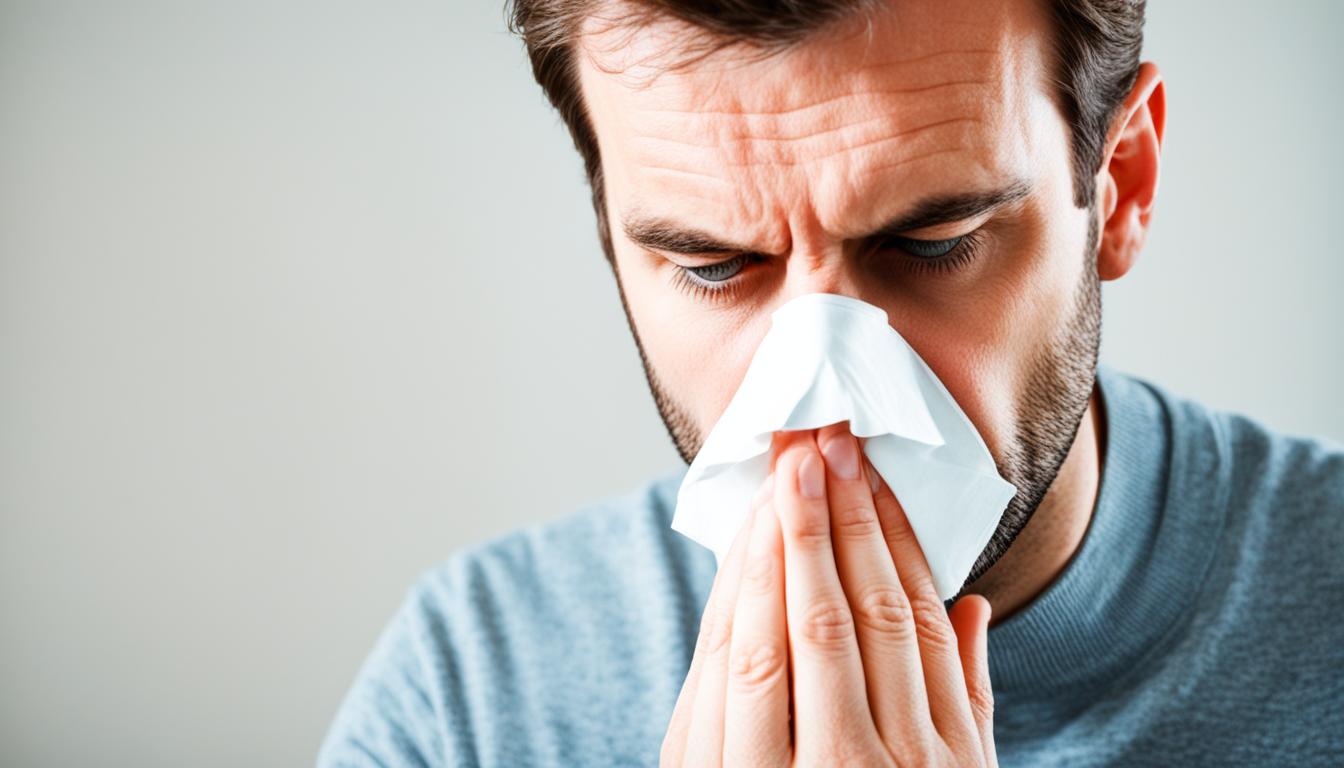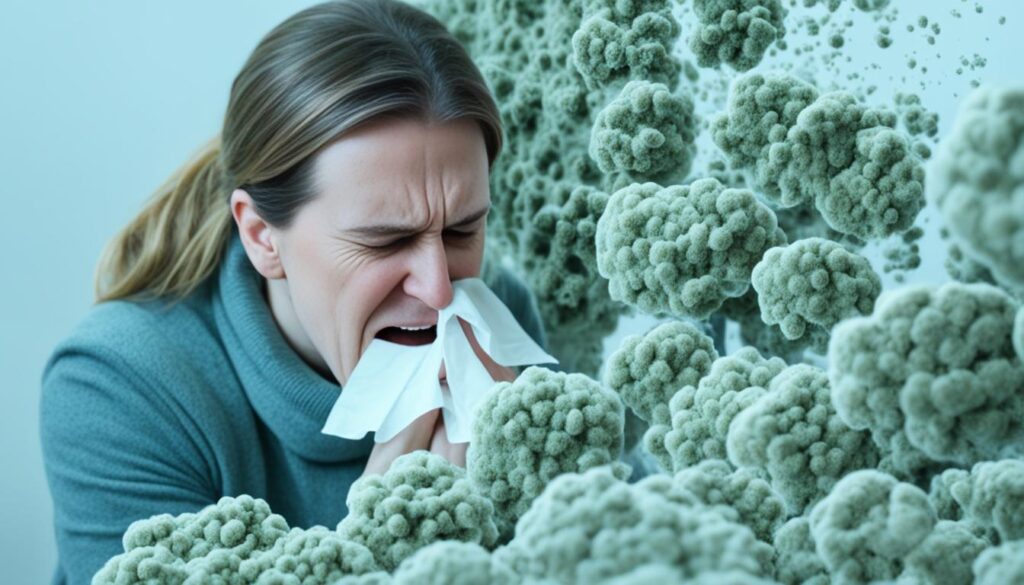
Premium Chocolate Mold Selections | Shop Now
In this section, we will explore the various symptoms that individuals may experience when they are allergic to mold. Mold allergies can cause a range of uncomfortable symptoms, and it’s important to be aware of these signs in order to seek appropriate treatment and relief.
Key Takeaways
- Mold allergies can cause various symptoms that differ from person to person.
- Common symptoms of mold allergies include respiratory issues, nasal congestion, itchy or watery eyes, skin rashes, and fatigue.
- Less common symptoms of mold allergies can include headaches, dizziness, difficulty concentrating, and digestive issues.
- Proper diagnosis and management are crucial for individuals with mold allergies.
- Taking steps to minimize exposure to mold can help reduce symptoms and improve overall well-being.
Common Symptoms of Mold Allergies
Mold allergies can manifest in various ways, and the symptoms can differ from person to person. However, some common symptoms of mold allergies include:
- Respiratory issues: Individuals may experience coughing, sneezing, and wheezing, which can be particularly bothersome in environments with high mold concentration.
- Nasal congestion: Mold allergies can cause nasal congestion, making it difficult for individuals to breathe freely through their noses.
- Itchy or watery eyes: Mold spores in the air can irritate the eyes, leading to itchiness and watering.
- Skin rashes: Some people with mold allergies may develop skin rashes upon contact with mold or in environments with mold growth.
- General fatigue or malaise: Mold allergies can leave individuals feeling fatigued and generally unwell, impacting their energy levels and overall quality of life.
If you experience any of these symptoms, it’s important to consider the possibility of mold allergy and take measures to minimize exposure. Seeking medical advice can help identify the underlying cause of your symptoms and determine the most appropriate treatment plan.

Expert Insight:
“Mold allergies can significantly affect respiratory health. Individuals should be vigilant about recognizing common symptoms and taking preventive measures to avoid environments with high mold concentrations.”
– Dr. Samantha Roberts, Allergist
Less Common Symptoms of Mold Allergies
While the common symptoms mentioned above are more frequently associated with mold allergies, there are also some less common symptoms that individuals may experience. It’s important to be aware of these less common symptoms as they can provide additional insights into the presence of mold allergies.
Headaches: Some individuals with mold allergies may experience frequent headaches. These headaches can range from mild to severe and may be accompanied by other symptoms such as sinus pressure or facial pain.
Dizziness: Mold allergies can cause dizziness or a lightheaded feeling. This symptom may be more pronounced in environments where mold is present, and it can interfere with daily activities and overall well-being.
Difficulty Concentrating: Mold allergies can affect cognitive function and make it challenging to concentrate. Individuals may experience brain fog or have trouble focusing on tasks, which can impact productivity and overall cognitive performance.
Digestive Issues: In some cases, mold allergies can manifest as gastrointestinal symptoms. These can include nausea, vomiting, abdominal pain, and diarrhea. It’s important to note that digestive issues can have various causes, so it’s essential to consider mold allergies in the broader context of an individual’s health and symptoms.
While these less common symptoms may not always be directly linked to mold allergies, they can serve as indicators of an underlying allergy or sensitivity. If you experience any of these symptoms in conjunction with other signs of mold exposure, it’s advisable to consult with a healthcare professional for further evaluation and guidance.

Key Takeaways:
- Less common symptoms of mold allergies can include headaches, dizziness, difficulty concentrating, and digestive issues.
- These symptoms may not always be directly linked to mold allergies but can indicate an underlying allergy or sensitivity.
- If you experience these less common symptoms along with other signs of mold exposure, it’s essential to consult with a healthcare professional for proper evaluation and guidance.
Conclusion
Mold allergies can have a significant impact on an individual’s quality of life. Recognizing the symptoms is crucial for proper diagnosis and management. If you suspect that you or someone you know may have mold allergies, it is advisable to consult with a healthcare professional for an accurate diagnosis.
Minimizing exposure to mold is key in reducing symptoms and improving overall well-being. This can be achieved by ensuring proper ventilation and maintaining a clean and dry living environment. Early intervention and proactive measures are essential when it comes to effectively managing mold allergies.
By taking the necessary steps to address mold allergies, individuals can regain control of their health and enjoy a better quality of life. Don’t let mold allergies hold you back. Consult with a healthcare professional today and make your well-being a top priority.




